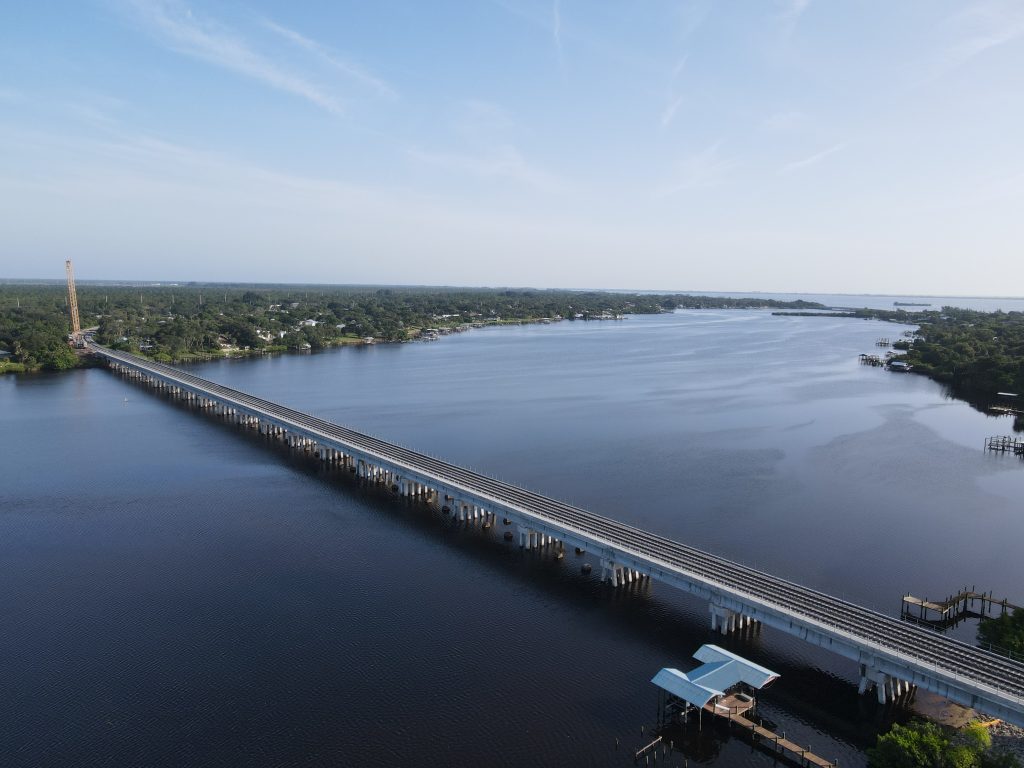Archives

Brightline High Speed Passenger Train – Featured Archive
Brightline High Speed Passenger Train – Featured Archive https://www.southlandholdings.com/wp-content/uploads/2024/09/50-2730-Cole-Kruggel-3-1024x768.jpg 1024 768 Southland Holdings Southland Holdings https://www.southlandholdings.com/wp-content/uploads/2024/09/50-2730-Cole-Kruggel-3-1024x768.jpgThe Brightline train project is more than just a transportation venture; it’s a historic feat of engineering and a testament to modern innovation. Stretching across miles of diverse terrain in Florida, this project connects the state’s major cities within an easy and quick route. Since its initial opening in 2018, the line has continued to grow, carrying over 2 million passengers in 2023. Today, Brightline’s maximum operating speed is 125 mph. The trains cover the 235-mile route from Miami to Orlando in 3 hours and 25 minutes, with an average speed of 69 mph.
Bridging the Gap: A Construction Marvel
At the heart of the Brightline project is the construction of 28 bridges, a crucial element in its design. These bridges are not just structures but symbols of connectivity and progress. The primary objective was to replace existing and outdated bridges with larger and more efficient ones, incorporating an additional track for rail traffic at each water crossing. This enhancement allowed both Brightline Trains and Florida East Coast Railway (FECR) to operate on two rail lines instead of one. Notably, four of the 28 bridges were of historical significance, namely the Eau Gallie River (Melbourne, FL), Crane Creek (Melbourne, FL), Turkey Creek (Palm Bay, FL), and Sebastian River (Sebastian, FL). These particular bridges posed the greatest challenges due to their size and complexity, requiring a meticulously coordinated approach.

Navigating Challenges: The Power of Innovation
Building a project of this scale is not without its challenges. The Brightline construction teams faced numerous obstacles, from difficult terrain to unpredictable weather conditions. However, these challenges were met with cutting-edge solutions and a workforce dedicated to overcoming any hurdles.
One of the major challenges was constructing the bridge foundations deep into the riverbed, ensuring stability and durability. This task required advanced machinery and techniques, including the use of large-diameter pilings driven deep into the ground. The project also demanded close coordination with environmental experts to protect the surrounding ecosystem, demonstrating a commitment to sustainable development. Another main challenge faced by the team involved coordinating with the railroad flaggers responsible for ensuring safety along the active railroad corridor, along with not impacting existing FECR rail traffic. Effective and constant communication was crucial with all members of the project team to mitigate any potential risks and ensure the smooth progress of the project.
Celebrating Success: A Community Effort
The Brightline project is not just about the engineering, it’s also a story of community and collaboration. The workforce behind this project includes hundreds of skilled workers, engineers, and planners, all contributing their expertise to bring this vision to life.
Moreover, the Brightline project is set to have a lasting impact on the communities it connects. By providing a fast, efficient, and reliable mode of transportation, it will open up new opportunities for economic growth, tourism, and cultural exchange. The project is poised to revolutionize travel in the region, making it easier for people to commute, explore, and engage with the world around them.
Looking Ahead: A Bright Future
As the Brightline project nears completion, it stands as a beacon of what’s possible when innovation meets determination. The rail line is now a tangible connection that will serve generations to come. The journey of Brightline is far from over; it’s a continuous path of progress that will shape the future of transportation in the region. The Brightline train project is a journey into history, one that honors the past while embracing the future. Our JBC team’s involvement in this project was a pivotal part in the success of the Brightline High Speed Passenger Train transit from Miami, FL to Orlando, FL in 2023, making history as the first private US passenger rail line in 100 years.
- Posted In:
- Archives



